Have you ever thought about how do ACs work? Are you wondering about it now? Then you have come to the perfect place. Let’s learn in-depth about how do ACs work.

It is summer now. You’re feeling the summer heat. Now, what is the first thing you do? You switch on the machine that makes all the problems go away: your air conditioner. Air conditioners pull off some seemingly magical feat. They make the air inside a home cooler.
Air conditioners give you much-needed:
- Thermal comfort during a summer.
- Maintain the room temperature at the optimum level.
- They help remove airborne particles
- Remove humidity from the room.
After reading today’s article you will be able to learn:
- How Do ACs Work?
- The parts of an Air Conditioner
- The fundamental principle of Air Conditioning
- The history of Air Conditioners. Did you know a Mosquito invented an Air Conditioner?
- How are today’s air conditioners different from Willis Design?
- What is the Best Refrigerant? Is it good for the Environment?
- How Air Conditioners Affect the World Environment?
Let’s find out how the air conditioners work.
How Do ACs Work?
In order to know how do ACs work, you have to know about its components first.
Eight main components play a pivotal role in cooling your home:
- A Thermostat
- Compressor
- Condenser
- Fan
- Metering Device
- Evaporator
- Blower
- Filter.
1. Thermostat
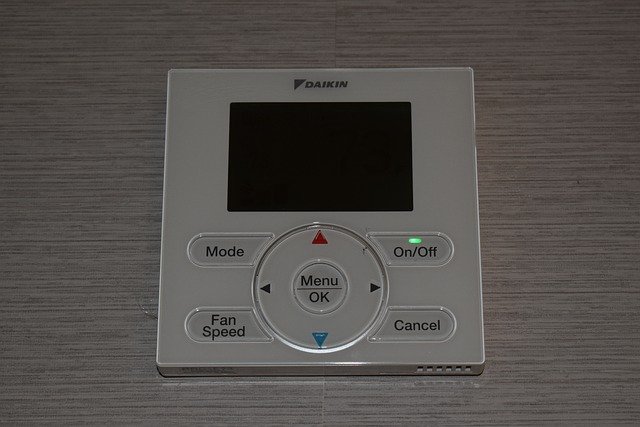
The first step of how do ACs work begins with setting your thermostat to the temperature you desire. This triggers the condenser fan and compressor to turn on. Typically Air conditioner Thermostats are of 3 kinds:
●》 Mechanical Type:
Things to know about mechanical thermostats:
- Simple to use and direct power from the voltage line.
- Bimetallic temperature sensor.
- The fan coil speed is 2-speed or 3-speed.
- Low cost.
●》 Electronic Type:
How it works:
- More accurate in temperature control (up to 0.5°C).
- Its use is to automate the entire building management system.
- An NTC thermistor sensor is used.
- A digital display is available.
- The digital display can be LED (light-emitting diode) or LCD (liquid crystal display).
- Most LCDs have clock displays.
●》 Programmable Type:
Things to know:
- It is the latest air conditioning thermostat.
- Common use in buildings and modern houses.
- Has all the basic features of a simple electronic thermostat.
- Ability to set different settings at different times of the day.
- Night setback mode.
- Intelligent enough to conserve energy.
- Holiday mode.
- Change filter indicator.
- Diagnostics mode.
2. Compressor
The compressor begins pumping a fluid called a ‘refrigerant’ throughout the system.
Use of Refrigerants:
- It is in use because of its low boiling point.
- Refrigerant is a volatile substance that changes from a vapor to a liquid.
- Low-temperature vapor.
- Low-pressure vapor.
- High Vapor Density.
- Dielectric strength is High.
- High Latent Heat of Vaporization.
- Low Condensing Pressure.
- High Evaporator Pressure.
- Critical Pressure is High.
- High Heat Transfer Coefficient
3. Condenser
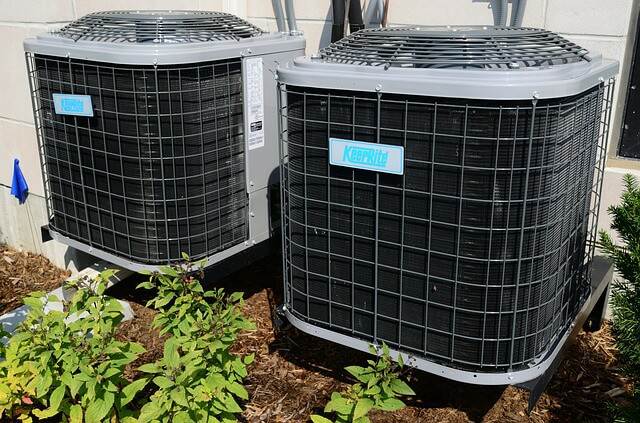
After compression, the refrigerant leaves as a high-temperature, high-pressure vapor. It then travels through the condenser coil. There the vapor condenses into a liquid. The coil outside the room is the condenser. The collection of heat by it from indoors and after compression, the condenser releases it outside.
4. Fan
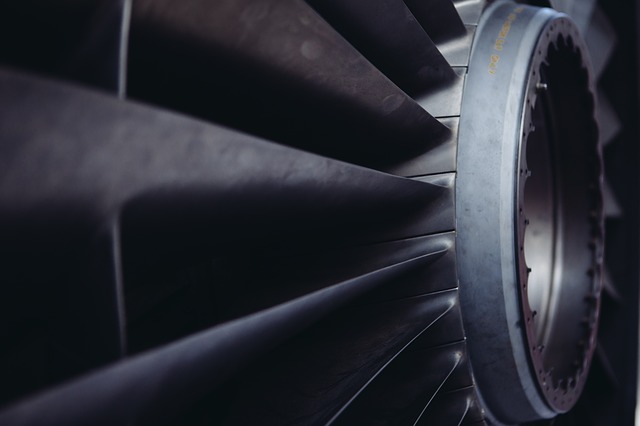
The fan inside the condenser is a vital part of it. It helps with the process of releasing the heat. A condenser is the outdoor portion of the whole Air conditioning setup. Its work is to either release or collect heat depending on the season. The condenser can not work properly without the fan.
5. The Metering Device
The refrigerant leaves the condenser as a medium-temperature, high-pressure liquid. Then, it flows to the metering device. In this case, there is a use of a thermal expansion valve. A pin inside the valve adjusts the flow rate of the refrigerant. It depends on the temperature at the evaporator end. The metering device uses a ‘sensing bulb’ for this process. As it flows through the valve, its pressure drops significantly, releasing a low-temperature, low-pressure liquid/vapor mix.
6. Evaporator
The lower pressure allows room temperature air to boil the refrigerant. The chilled refrigerant then flows through the evaporator coil. This is where the cold air comes out from. Here, it absorbs heat. The coil inside the room is the evaporator.
7. Blower
The blower begins circulating air throughout the house. It is a key portion of the air conditioning system. It produces air movements.
8. Filter
Then the room-temperature air passes through the return duct. It then arrives at the filter to remove particulates.
Let’s go through the process again:
- The heat from the air is absorbed into the refrigerant inside the evaporator coil.
- This disperses cold air through the supply duct.
- As the air passes over the coil, the refrigerant boils up.
- The refrigerant evaporates back into vapor form.
- During this process, condensation forms on the outside of the coil.
- It then exits through a condensate drain line.
- The refrigerant returns to the condenser to disperse the collection of heat outdoors.
- And, the cycle goes on and on.
- Your home slowly cools down.
- The thermostat shuts off the equipment once it senses the desired temperature.
The fundamental principle of an air-conditioner
It is simple.
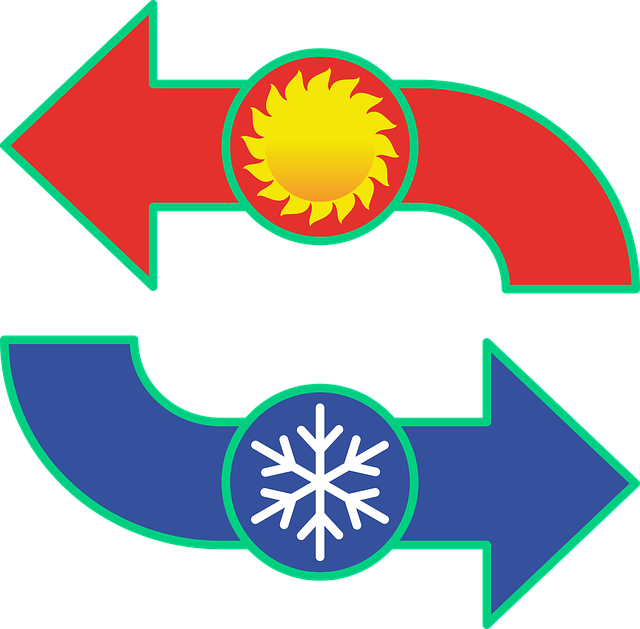
FollowIng are some conditions:
- Just keep the evaporator cold. More specifically, colder than the room temperature.
- Again, keep the condenser hot. More specifically, keep it hotter than the surroundings.
With these conditions, the continuously flowing fluid will absorb the heat from the room. Moreover, eject it out to the surroundings. This is the fundamental rule of an air conditioner.
How a Mosquito is the Inventor of Air conditioners?
Believe it or not, but you have to thank mosquitoes for the invention of air conditioning. We can deem them as its forefathers!
No one loves them in the 21st century. But, back in the 19th-century mosquitoes were a real nightmare. They carried around different infections, such as malaria.
The steps to the invention of Air Conditioners:
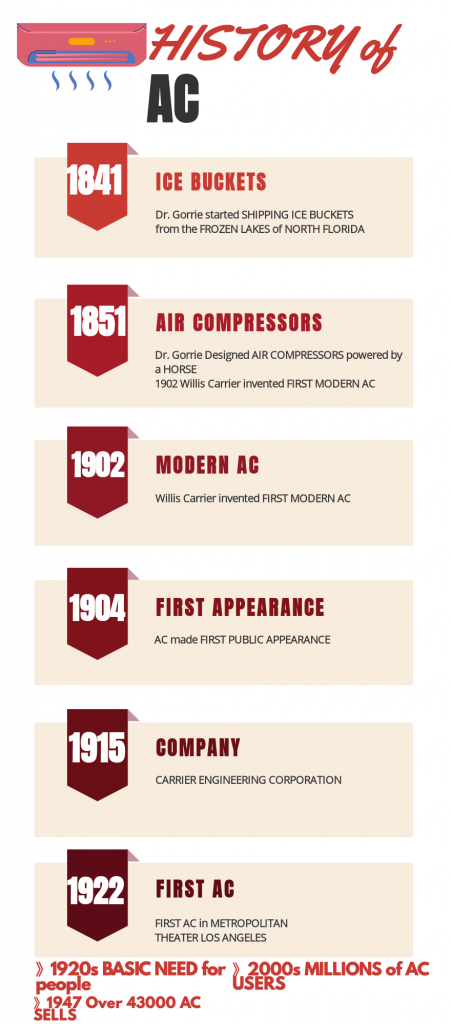
The Revolutionary Dr. Gorrie
- Things were especially bad in swampy areas of Florida. There was a physician and inventor Dr. John Gorrie. He was trying to find a way to drain the swamps. While he was at it, he got this revolutionary idea in 1841. He got into the realization that the problem was literally in the air. So cooling the air could fix it!
- Dr. Gorrie got an idea of shipping buckets of ice from frozen lakes and streams from North Florida into hospital rooms.
- It worked. But, it was not a very resourceful job to do.
- So he came up with a new idea. By 1851, he designed an air compressor to make ice out of water.
- The mechanism was powered by a horse. This is the initial step towards air conditioning! It does have a lot in common with the ACS of today.
Willis Carrier: Inventor of Modern Air Conditioners
- A few decades later, an engineer by the name of Willis Carrier added to the invention.
- He was helping a publishing company to stop magazine pages from wrinkling because of humidity.
- He designed the first electrical air conditioning unit with cooling coils and air filters.
- There was the use of cold water as a coolant at first.
- There was an ammonia compressor that was in use in his machine.
- Carrier then got the idea that it can also work to humidify or dehumidify room air as well.
- He patented the invention and started his own Carrier Engineering Corporation in 1915.
- Air conditioning made its first mass public appearance at the St. Louis World’s Fair in 1904. The 1,000 people in the auditorium loved the idea of comfort cooling.
- In the 1920s, it became a basic need for thousands of people
- The Metropolitan Theater in Los Angeles got the first perfect public air conditioning system.
- In 1922, Carrier Engineering Corporation installed the first well-designed cooling system for theaters at Metropolitan Theater in Los Angeles.
- By 1947, Carrier Engineering Corporation sold 43,000 systems for homes across the world.
How are today’s Air Conditioners different from Willis Design?
Today’s air conditioners are,
- More energy efficient,
- Much quieter,
- Have way better diagnostics, controls, electronic sensors,
- Is made of better materials,
- Cost Efficient,
- Environment Friendly mostly
What is the Best Refrigerant? Is it good for the Environment?
A refrigerant needs to have the following qualities,
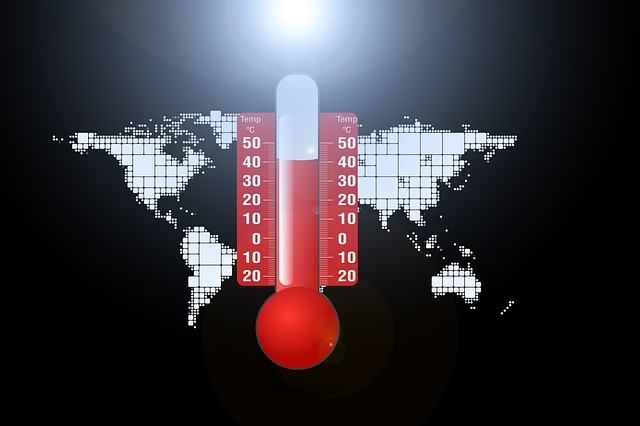
- Low boiling point,
- Have adjustable pressure,
- Should be pretty good at conducting heat,
- Be able to absorb a lot of heat as it boils,
- Needs to be cheap,
- Widely available,
- As non-flammable and non-toxic as possible.
This narrows your choices of chemicals.
Freon:
Scientists thought they’d found the perfect refrigerant with Freon. The trade name of a group of chemicals by the name chlorofluorocarbons. But CFCs are the actual murderers of the ozone layer.
HFC:
The replacements for freon are hydrofluorocarbons or HFCs. HFCs don’t damage the ozone layer, which is good!
But they have a different problem. They’re greenhouse gases. So the search is on to phase out HFCs too.
Hydrofluoroolefins:
Hydrofluoroolefins are less rough on the climate than HFCs. But, they are also very expensive.
CO2:
The world is getting warmer. But, as humans, we thrive to stay on the cooler sides. This led to the invention of a menace. It goes by the name of air conditioners. Trying to stay cool adds up to the rising temperatures. According to a study, the total installed capacity of air conditioners will rise threefold by 2030. Its effects are far more adverse to the environment than we can think of. Moreover, air conditioners emit pollutants like hydrofluorocarbons into the atmosphere.
The most surprising potential replacement is CO2. CO2 totally works as a refrigerant. It is way less potent than HFCs.
How Air Conditioners Affect the World Environment
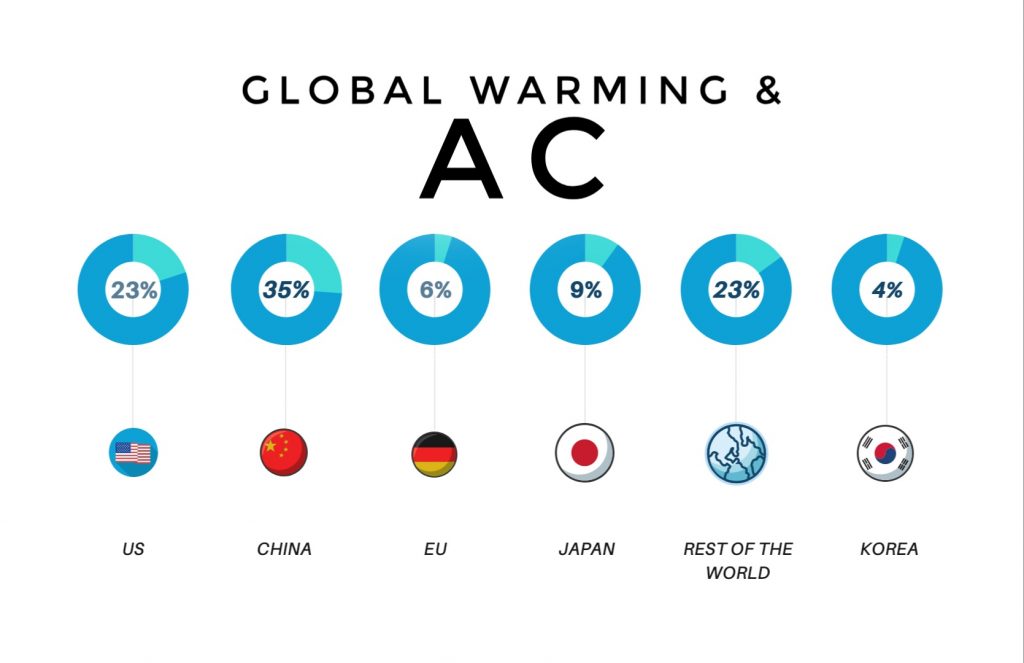
There is a report that 27 percent of all global warming will be due to the gases from air conditioners by 2050. By 2050 the world’s air conditioners would be using the current electricity capacity of the US, the European Union, and Japan combined. 16 of the 17 warmest years on record have occurred since 2001. So, is there no hope at all?
This data should serve as a warning for times to come.
What is the solution?
- The World leaders should come forth.
- Manufacturers of air conditioners should keep the default setting of the cooling machines at 24 degrees Celsius.
- It conserves energy
- It can save 20 billion kilowatt-hours of electricity in 1 year only if all consumers adopt it.
We all should work at a rapid pace in order to offset the grave impact of air conditioning on our environment.
Conclusion
I hope you enjoyed my ultimate guide to how do ACs work.
Now I’d like to hear from you: What do you think about the use of Air conditioners? Do you think they are bad for the environment? Can you live without them?
Either way, let me know by leaving a quick comment below.
Read More Exciting Articles



